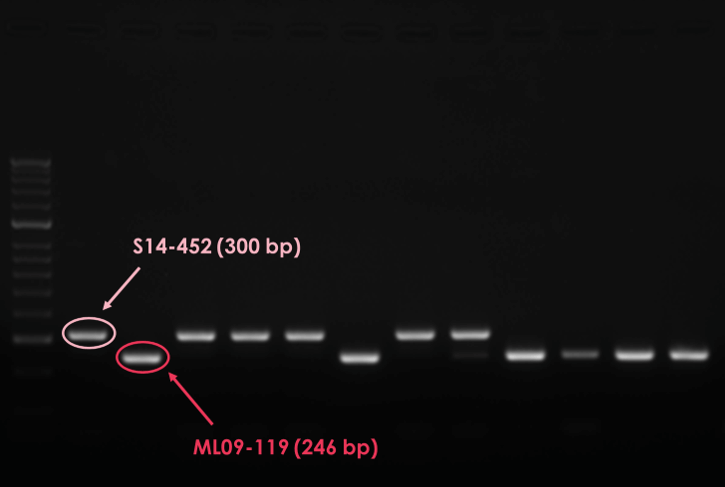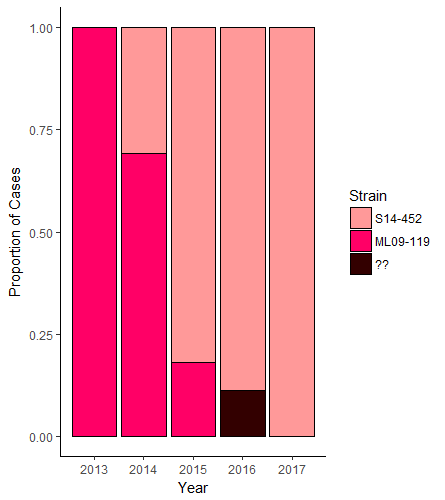Haplotype Shuffle
As mentioned in the project description of my Aeromonas work, we are currently working with two different strains/genotypes of virulent Aeromonas hydrophila. Dealing with multiple strains of a bacteria can prove difficult with creating vaccines or administering antibiotics so we wanted to see how the temporal distribution of these two strains compared.
So, we analyzed the isolates from various cases using polymerase chain reaction (PCR) and electrophoresis. The image below shows what a typical electrophoresis gel looks like and how to read it. Each white band is a specific disease case and the location of each band tells us what strain of bacteria was collected from a specific case.

Using isolates collected from diseased catfish in the Mississippi Delta from 2013 (a year before the S14 strain was collected) to 2017, a very interesting pattern emerged. In less than 5 years, the new S14 strain made up 100% of all virulent Aeromonas cases (see figure below)!

As mentioned before, this could have important implications for people working to create a vaccine or administering antibiotics because there is no guarantee that the medications will work on both strains!